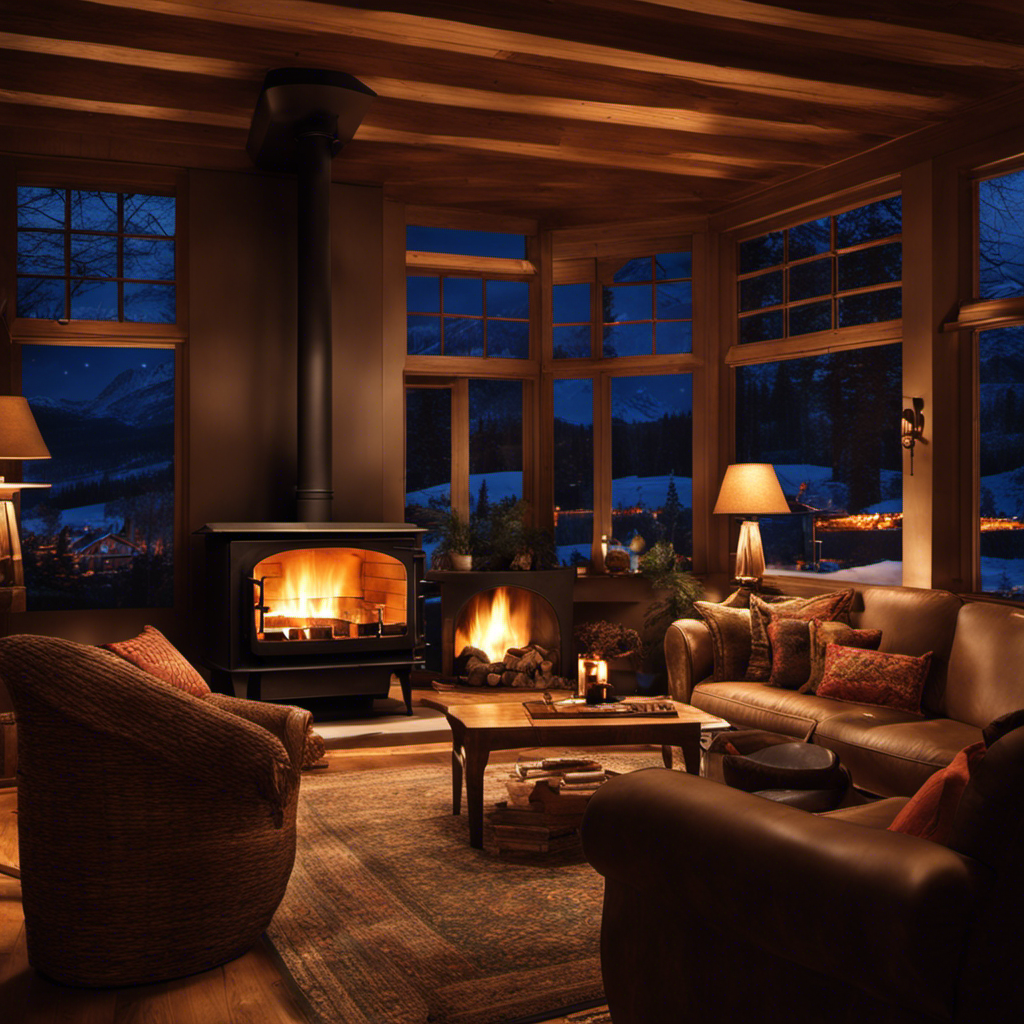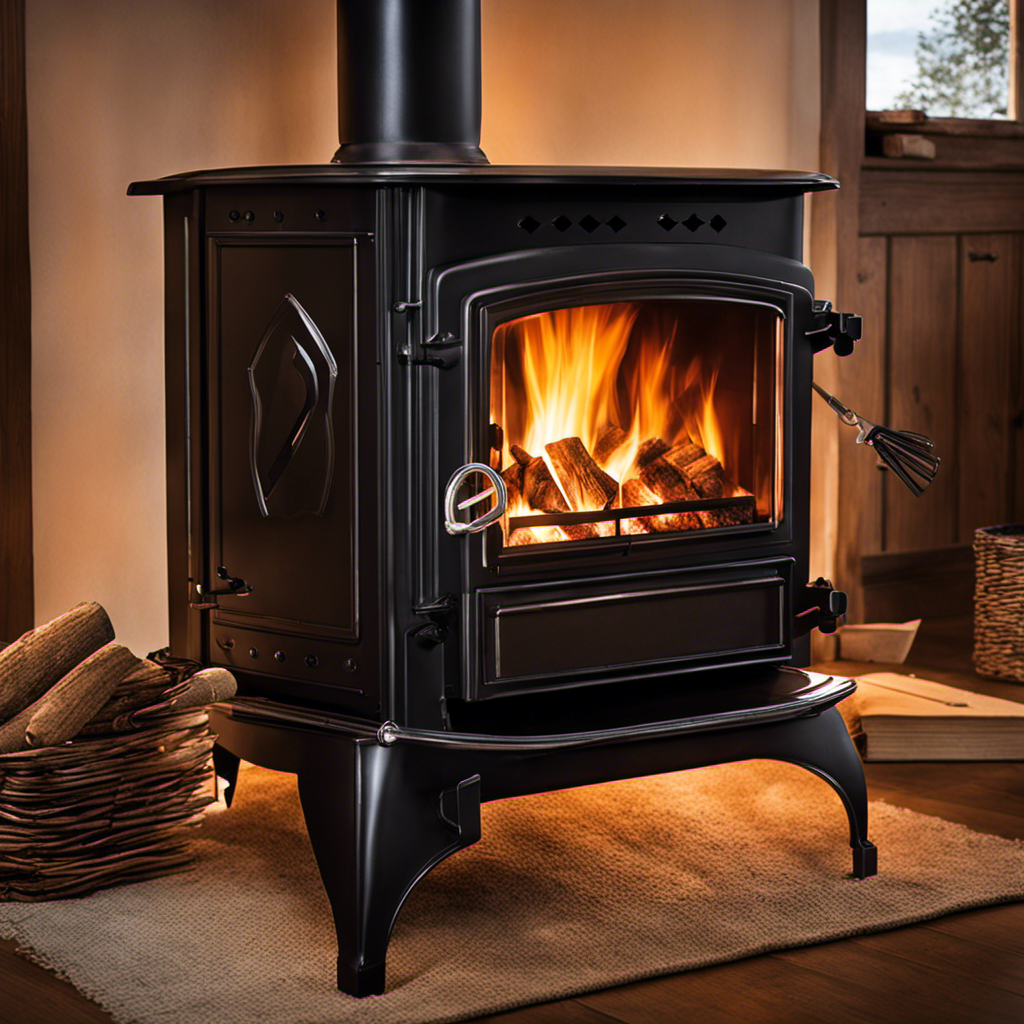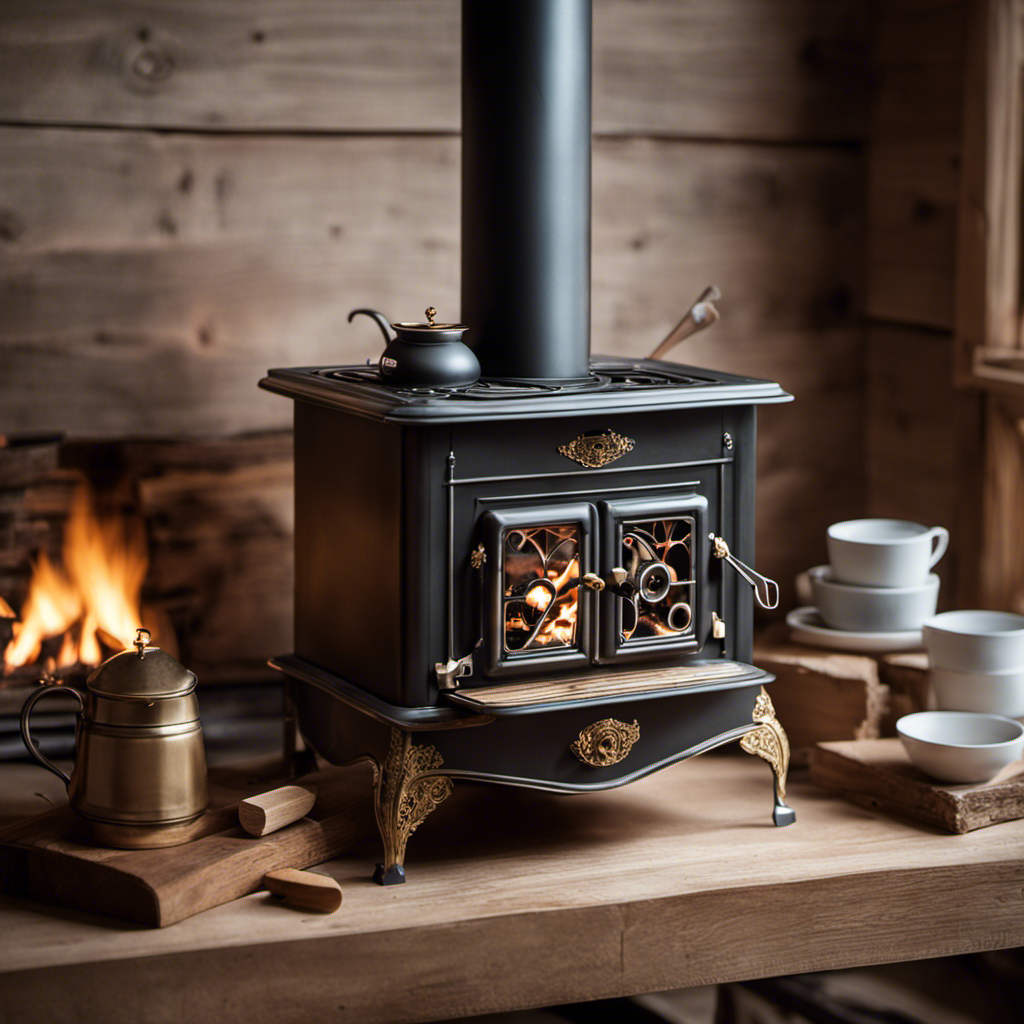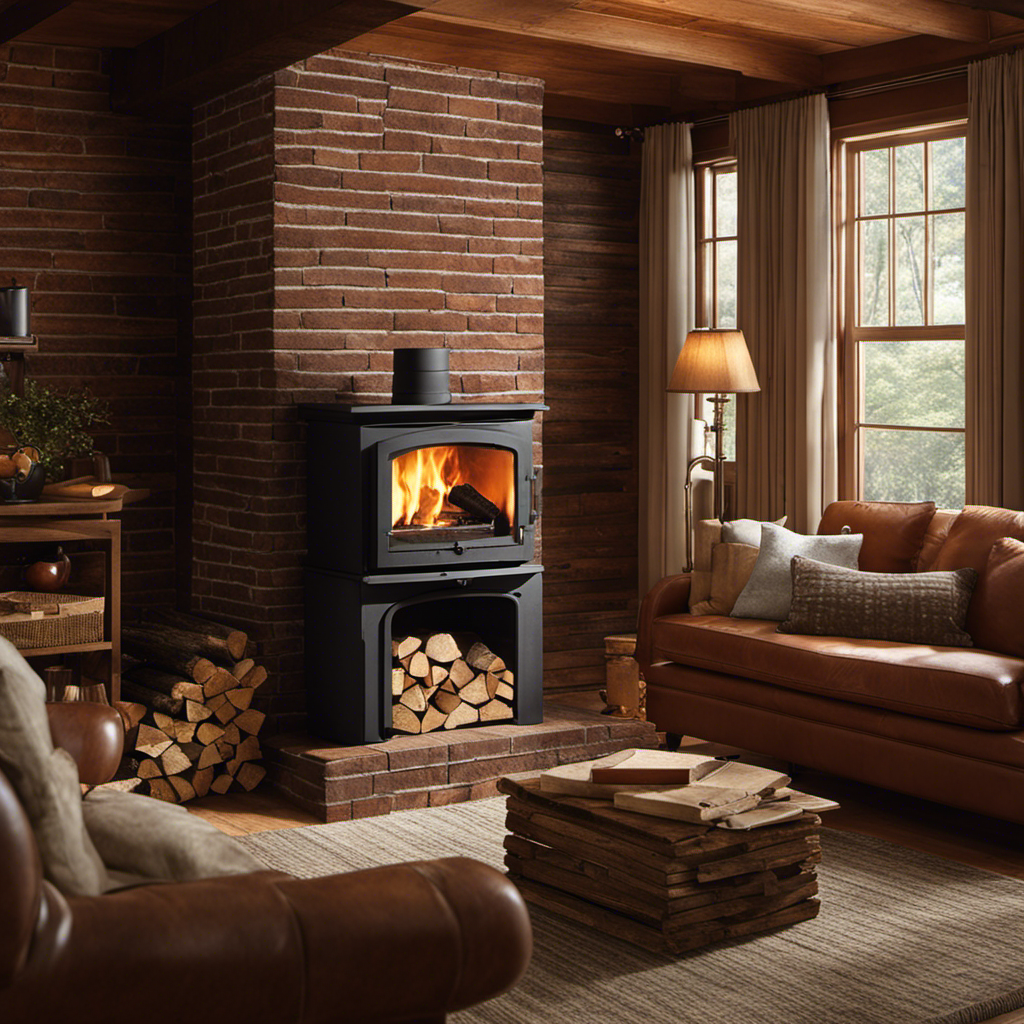As a fan of the comforting warmth of a wood stove on a cold evening, I understand the frustration of waking up to a cold, extinguished fire. But don’t worry! I’m thrilled to share my reliable tips on how to keep your wood stove burning throughout the night.
From proper airflow to choosing the right wood, I’ll guide you through the techniques that will ensure a long-lasting, consistent burn.
Say goodbye to freezing mornings and hello to toasty nights. Let’s get started!
Key Takeaways
- Proper airflow and ventilation are crucial for efficient and long-lasting burn times.
- Choosing the right wood, such as seasoned hardwoods, is important for longer burn times and greater heat output.
- Stacking techniques, like creating a solid base and stacking wood in a crisscross pattern, help maintain a consistent burn and airflow.
- Regular maintenance, including adjusting air vents, removing ash buildup, and adding fuel at regular intervals, ensures a steady burn rate and prevents wasted fuel.
Importance of Proper Airflow
I can’t stress enough the importance of maintaining proper airflow in your wood stove to ensure efficient and long-lasting burn times.
Ventilation methods play a crucial role in the operation of a wood stove. One of the key factors affecting airflow is the size and positioning of the air vents. The primary air vent controls the flow of air into the combustion chamber, while the secondary air vent helps to burn off any remaining smoke and gases. It’s important to open these vents fully during the initial lighting of the fire and then adjust them accordingly to maintain a steady and controlled burn.
Another factor that impacts airflow is the cleanliness of the stove and chimney. Any buildup of creosote or debris can restrict airflow and reduce the stove’s performance. Regular cleaning and maintenance are necessary to ensure optimal airflow and efficient operation of your wood stove.
Choosing the Right Wood
To maximize the efficiency and longevity of your wood stove, ensure you choose the right wood and properly maintain it. Here are four key factors to consider when selecting firewood:
-
Moisture Content: Opt for seasoned firewood with a moisture content below 20%. High moisture content can lead to increased smoke, reduced heat output, and the buildup of creosote in your chimney.
-
Hardwood vs. Softwood: Hardwoods like oak, maple, and birch provide longer burn times and greater heat output compared to softwoods like pine and spruce. Hardwoods also produce less creosote and ash.
-
Size and Splitting: Use wood that fits your stove’s size and splits easily. Smaller pieces ignite faster, while larger logs provide longer burn times. Splitting wood increases surface area, promoting faster drying and efficient combustion.
-
Storage and Seasoning: Properly store firewood in a dry, well-ventilated area for at least six months to a year. This allows the wood to dry and reach the optimal moisture content for efficient burning.
Stacking Techniques for Long-lasting Heat
Using proper stacking techniques and ensuring adequate ventilation are crucial for achieving long-lasting heat from your wood stove. Efficient insulation and proper fuel storage are also essential factors to consider. When it comes to stacking your wood, it’s important to create a solid base using larger logs and then gradually build upwards with smaller pieces. This allows for better airflow and ensures that the fire burns evenly. Additionally, stacking the wood in a crisscross pattern helps to create stability and allows for better combustion. Adequate ventilation is crucial for maintaining a steady flow of oxygen to the fire. Make sure to keep the air vents open and clean to prevent any blockages. Lastly, efficient insulation and proper fuel storage help to retain heat and prevent heat loss, ensuring that your wood stove will burn all night.
| Stacking Techniques | Benefits |
|---|---|
| Solid base using larger logs | Better airflow |
| Gradually build upwards with smaller pieces | Even burn |
| Crisscross pattern | Stability and better combustion |
| Adequate ventilation | Steady flow of oxygen |
| Efficient insulation and proper fuel storage | Retain heat and prevent heat loss |
Maintaining a Consistent Burn Rate
A consistent burn rate can be achieved by adjusting the air vents and adding fuel as needed. To optimize your burn rate and troubleshoot common burn issues, follow these four essential tips:
-
Adjust the air vents: Open the vents fully to increase airflow and promote a higher burn rate. Conversely, closing the vents partially will reduce airflow and slow down the burn rate.
-
Use dry and seasoned wood: Moisture content in the wood affects the burn rate. Ensure your firewood is properly seasoned, as wet or green wood will burn slower and less efficiently.
-
Keep the firebox clean: Regularly remove ash buildup to maintain proper airflow and avoid potential burn rate issues caused by restricted oxygen flow.
-
Monitor the fuel load: Adding fuel at regular intervals will help maintain a steady burn rate. Avoid overloading the firebox, as it can lead to a rapid burn and wasted fuel.
By implementing these burn rate optimization techniques, you can enjoy a more efficient and consistent burn in your wood stove.
Now, let’s move on to some overnight fire management tips.
Overnight Fire Management Tips
I’ve found that adding a few extra logs before bed helps ensure a longer-lasting fire throughout the night.
When it comes to fire safety precautions, it’s essential to take the necessary steps to prevent any potential hazards. First and foremost, make sure your wood stove is clean and properly maintained. Regularly inspect the chimney and remove any creosote buildup to prevent chimney fires.
Additionally, always use dry, seasoned wood to minimize the risk of excessive smoke and creosote buildup. Another important aspect of overnight fire management is insulating your wood stove. This helps retain heat and ensures a more efficient burn. Use firebricks or fireproof insulation to line the walls and floor of the stove.
Conclusion
In conclusion, by following these tips, you can ensure your wood stove keeps burning all night, providing you with a consistent and long-lasting heat source.
Remember, proper airflow, choosing the right wood, stacking techniques, and maintaining a consistent burn rate are key factors in achieving this.
So, why let the fire die when you can keep it alive? With these strategies, you can enjoy the warmth and comfort of your wood stove throughout the night.
Logan’s affair with adventure began in childhood. He hailed from a small town where vast forests bordered one side and endless shores stretched on the other. His days were spent exploring uncharted woods, climbing tall trees, or listening to the tales of old sailors. This early immersion in a world brimming with stories and mysteries became the foundation of his passion for writing.










